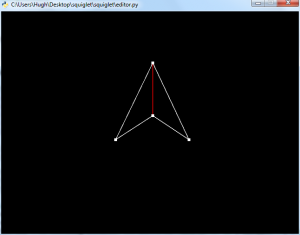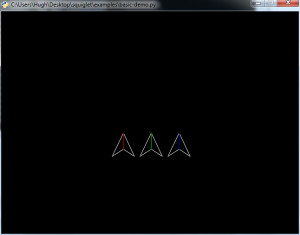Marble run plans complete
Well after lots of screwing around in Autodesk Inventor I finally have the final plan drawn up for the marble run portion of the machine.
I have also made a major change to my expected overall design, making it a much flatter design, making for simpler parts and less supports needed.
I started just doing one small portion of the mechanism i decided to call the dripper because it "drips" marbles, from this i also had a go at running dynamic simulations and managed to run and test the "dripper" and render a video of how it went.
More recently I have also rendered an image of the whole setup (without the cabinet, pivots ect) and can be found HERE (my thumbnail generator is not working properly)
I have printed out templates for all of the pieces and plan on cutting these out as MDF templates some time next week.
Squiglet – Now with examples
Just a little progress report to say that my vector library is nearing V1 and i will soon be able to resume work on Saga of Sol.
As of yet i just need to tweak the draw function of the vectors to fix an odd bug where the lines will have gaps near the corners of some shapes as well as adding some more functionality to the editor.
As usual the project is available HERE
Enter Squiglet
The graphics style i have chosen for the game i am working on, Saga of Sol, is very simple. The majority of the graphics such as ships, buildings, will be composed only of plain old white on black lines, with some "highlight" or "feature" lines being drawn a different colour to denote what team it is on.
I didn't think that it was appropriate to go for a full on vector/SVG library for pyglet such as Squirtle. So i have begun the creation of my own much simpler vector library "squiglet" that will handle the graphics for my game.
As of yet i have the basis of most of the vector classes complete (no functions yet to draw them into the game) and am about 80% of the way done on my own editor for the vectors.
If your interested in the project it can be found on GitHub at https://github.com/Hugoagogo/squiglet or you can follow along on my blog HERE
Weeks Unknown – Scaling Troubles
After many disruptions, holidays and general laziness i finally got around to doing some more work on Saga of Sol. To start off the term i had begun setting up the framework and basics of the local planet view. This is the view that when you are playing the game you are going to spend the most time in, building your armies and crushing your foes, and so on and so forth.
However not long into the programming i hit the barrier of software surface transformations. The simple effect being that when zoomed out a long way or scrolling quickly. Looking around at getting pygame to correctly take advantage of hardware surfaces, i quickly found that the general consensus is, dont bother and i got redirected to pyglet.
Pyglet is another python graphics library based around opengl and makes good use of hardware surfaces by default. In learning pylet i stumbled upon some basic guides on game desgin and another guide that provides a basic camera class for me to base my scrolling and zooming upon.
After lots of modification i have got to a point where one is able to zoom in and out towards a point on a map and scroll around in general RTS style. More difficult was trying to convert between screen and opengl (world) coordinates so you are able to identify whereabouts in game space your cursor is.

A screen-cap of the running trial, the scribble is made by moving the mouse to show correct conversion between screen and opengl coordinates
I will hopefully have some code up soon for those that are interested, as soon as it is tidied up and commented
Donation box prototypes
I have begun to plan and design some aspects of the marble run window of my interactive donation box. There are two main aspects i have been focusing on so far are, ways to lift the marbles back to the starting point and different track elements for on the way down. For both of these i have begun the construction of cardboard prototypes.
Marble lift
There are a few different methods that are used to lift marbles, the main ones being screw based or disk based, i have decided that it would be much easier to go with the disk design as it would be much easier to manufacture out of predominantly wood
This video shows my prototype, the final version will have 5 of the wheels and gears to keep the wheels in sync
Track Elements
For my cardboard prototypes it is very difficult to produce any shape with much of a curve, so i have focused on the moving elements of the track. These designs are based off many other marble runs on youtube. This setup is designed to be the elements that will fill one side of the display. In the final version there will be more simple and decorative elements such as spirals and twists to connect the moving elements.
I will hopefully have some more videos of prototypes up in the next few weeks as i work on them.

